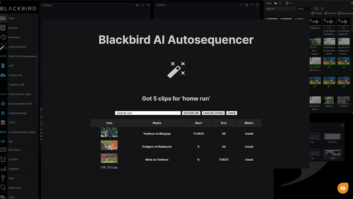Cloud-based production platform Aframe is to add enhanced browser-based editing, file delivery and graphics capability to its system in an announcement timed for IBC, writes Adrian Pennington. Aframe is also developing an international network of drop-off sites for the upload of hi-res rushes to its network.
The company has a memorandum of understanding pending with three developers to plug their services into Aframe’s cloud platform.
“Mark in and mark out editing is possible as it stands for rough cuts on proxies but the new addition would boost this capability and provide producers with more options,” said Aframe co-founder and director David Peto. “Aframe is a platform as well as service and anyone can use our API to plug in apps which can be monetized by the app developer.”
Aframe is also close to signing up a number of facility partners in the US, South Africa, Australia and other locations, to enable producers to quickly upload hard drives of high resolution rushes for distribution over high speed fibre to a production’s editing team.
“These drop-off sites are like taking photographs to be developed and are the next stage in our strategy,” said Peto. “It will cost producer’s just pence per Gigabyte, which the local facility will keep. Those facilities which have invested in fibre lines will find a way of at least covering the cost of their investment this way.”
ESPN will use the service’s logging functionality during production of an Ultimate Fighting Championship event in two weeks in London. Aframe’s logging team will tag significant events from a live feed of the event, perform instant cuts to create highlights packages and route the metadata to ESPN’s US headquarters.
“The process normally takes five days. We are turning it around in an afternoon,” claimed Peto. “This type of application will grow, particularly among sports franchises who are increasingly shooting video which isn’t broadcast. Arsenal FC, for example, make £1m a month from website video in advertising revenues alone. A lot of other sports franchises want the ability to exploit video without the expense and complexity of buying, maintaining and staffing hardware.”






